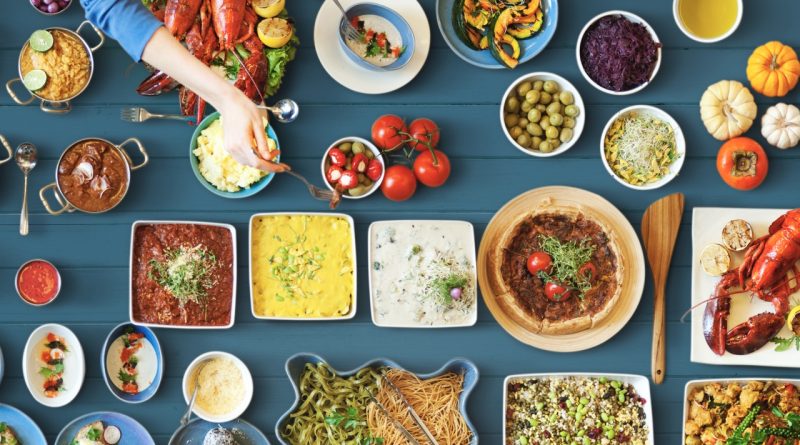How to Choose the Right Thermometer for Cooking
Choosing the right thermometer for cooking is an essential step toward achieving culinary excellence. Accurate temperature readings can mean the difference between a perfectly cooked meal and a food disaster. With a variety of cooking thermometers available on the market, understanding their unique features and functions can help you make an informed decision. This article will guide you through the different types of cooking thermometers, key features to consider, the importance of accurate temperature readings, and maintenance tips to ensure your thermometer lasts for years to come.
Understanding Different Types of Cooking Thermometers
Cooking thermometers come in several types, each designed for specific cooking methods and temperature ranges. The most common types include instant-read thermometers, probe thermometers, infrared thermometers, and candy thermometers. Instant-read thermometers are ideal for quickly checking the internal temperature of meats and other dishes, providing results in a matter of seconds. Probe thermometers, on the other hand, are perfect for monitoring temperature over longer periods, as they can be left in the food while it cooks.
Infrared thermometers offer a non-contact method for measuring surface temperatures, which is particularly useful for frying and grilling, where you want to avoid disturbing the cooking process. Candy thermometers are specifically designed for sugar-based recipes, featuring a higher temperature range to monitor the cooking of caramel or other confections. Knowing the function of each type will help you choose the thermometer that best fits your cooking style and needs.
In addition to these common types, there are also specialized thermometers, such as digital meat thermometers with wireless capabilities and smartphone connectivity. These devices can alert you when your food reaches the desired temperature, allowing for greater flexibility in the kitchen. Understanding the variety of thermometers available will empower you to select the right tool for your culinary tasks.
Key Features to Consider When Selecting a Thermometer
When choosing a cooking thermometer, several key features should be taken into account to ensure you get the most out of your investment. First, consider the temperature range. Different cooking methods require different temperature ranges, so it’s important to select a thermometer that can measure the temperatures you need, whether for roasting meats, baking, or candy making.
Another important feature is the speed of the reading. Instant-read thermometers are designed to provide quick results, often within 5 to 10 seconds. However, if you are roasting or smoking meats, a probe thermometer that provides continual readings over time may be more beneficial. Additionally, some thermometers come with backlit displays for easy reading in low-light conditions, which can be a handy feature when you’re cooking after sunset or in a dim kitchen.
Lastly, consider the design and durability of the thermometer. Look for models that are easy to clean, have a solid construction, and can withstand high temperatures. Waterproof or splash-proof options can also be advantageous for easy maintenance. By assessing these features, you can ensure that your cooking thermometer meets your kitchen needs while maintaining longevity.
Accurate Temperature Readings: Why It Matters
Accurate temperature readings are crucial in cooking, particularly when it comes to food safety and quality. Undercooked meats can harbor harmful bacteria, leading to foodborne illnesses, while overcooked meats can result in dry, tough textures that ruin the dining experience. Using a reliable thermometer helps to ensure that foods reach the appropriate internal temperatures, safeguarding both your health and the integrity of your meal.
Additionally, precise temperature control is essential for achieving the desired results in various cooking techniques. Baking, for instance, often requires exact temperatures to ensure that recipes rise correctly and achieve the appropriate texture. Similarly, candy-making demands accurate temperature measurement to prevent crystallization or burning. A quality thermometer allows you to reproduce successful dishes with consistency, enhancing your skills as a cook.
Finally, understanding the importance of temperature accuracy can also serve as a learning tool in the kitchen. By tracking temperature changes, you can gain insights into how different cooking methods affect the final product. This knowledge can lead to improved culinary techniques and an elevated confidence level as you experiment with new recipes.
Maintenance Tips for Longevity of Your Cooking Thermometer
Proper maintenance of your cooking thermometer is essential for ensuring its longevity and accuracy over time. One of the best practices is to clean it thoroughly after each use. For analog thermometers, avoid immersing them in water, as this can damage internal components. Instead, wipe the probe with warm soapy water and sanitize it with a solution of 1 tablespoon of unscented liquid chlorine bleach per gallon of water. For digital thermometers, ensure the battery is replaced regularly and that the device remains dry to prevent malfunction.
Another important maintenance tip is to calibrate your thermometer periodically. This involves checking its accuracy against a known temperature, such as the freezing point of water (32°F or 0°C). If your thermometer is not reading accurately, consult the manufacturer’s instructions for recalibration methods or consider replacing it if it cannot be adjusted. Calibration helps ensure that you can trust the readings, reinforcing the importance of accuracy in your cooking.
Lastly, store your cooking thermometer properly to protect it from physical damage. Avoid dropping it or exposing it to extreme temperatures, as this can compromise its accuracy. For digital models, store them in a protective case when not in use to prevent the screen from scratches and internal components from damage. By following these maintenance tips, you can extend the life of your cooking thermometer, allowing it to serve you well for many cooking endeavors.
In conclusion, selecting the right thermometer for cooking involves understanding the various types available, considering essential features, emphasizing the importance of accurate temperature readings, and practicing proper maintenance. By investing time in choosing an appropriate thermometer and ensuring its upkeep, you can elevate your cooking skills and enjoy consistently delicious results. Whether you are a novice cook or a seasoned chef, the right thermometer is an invaluable tool in achieving culinary success.
